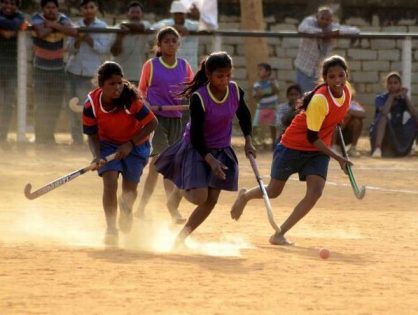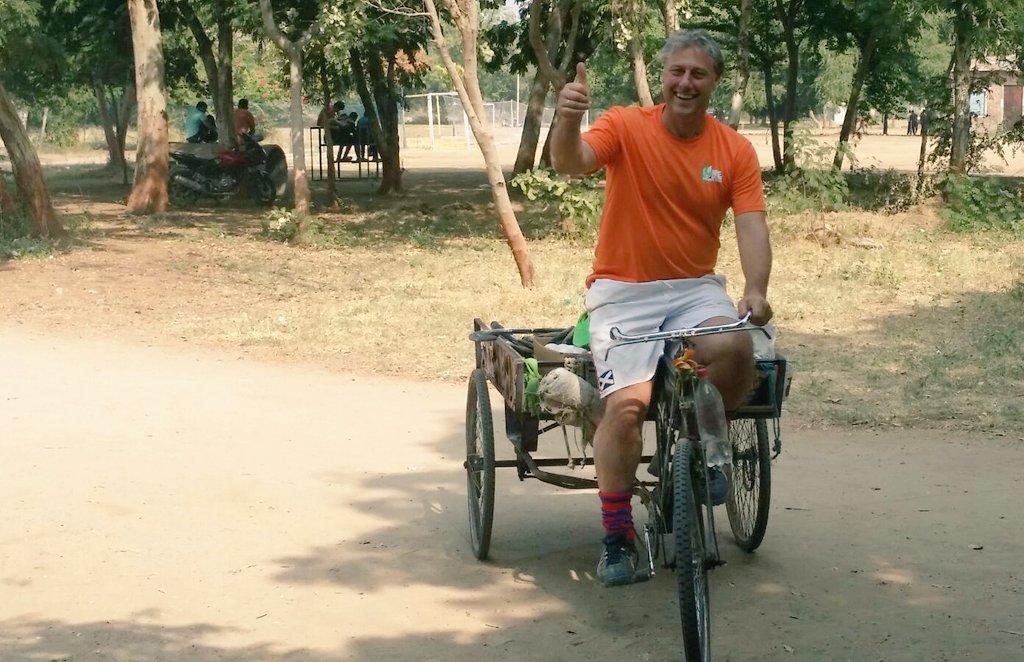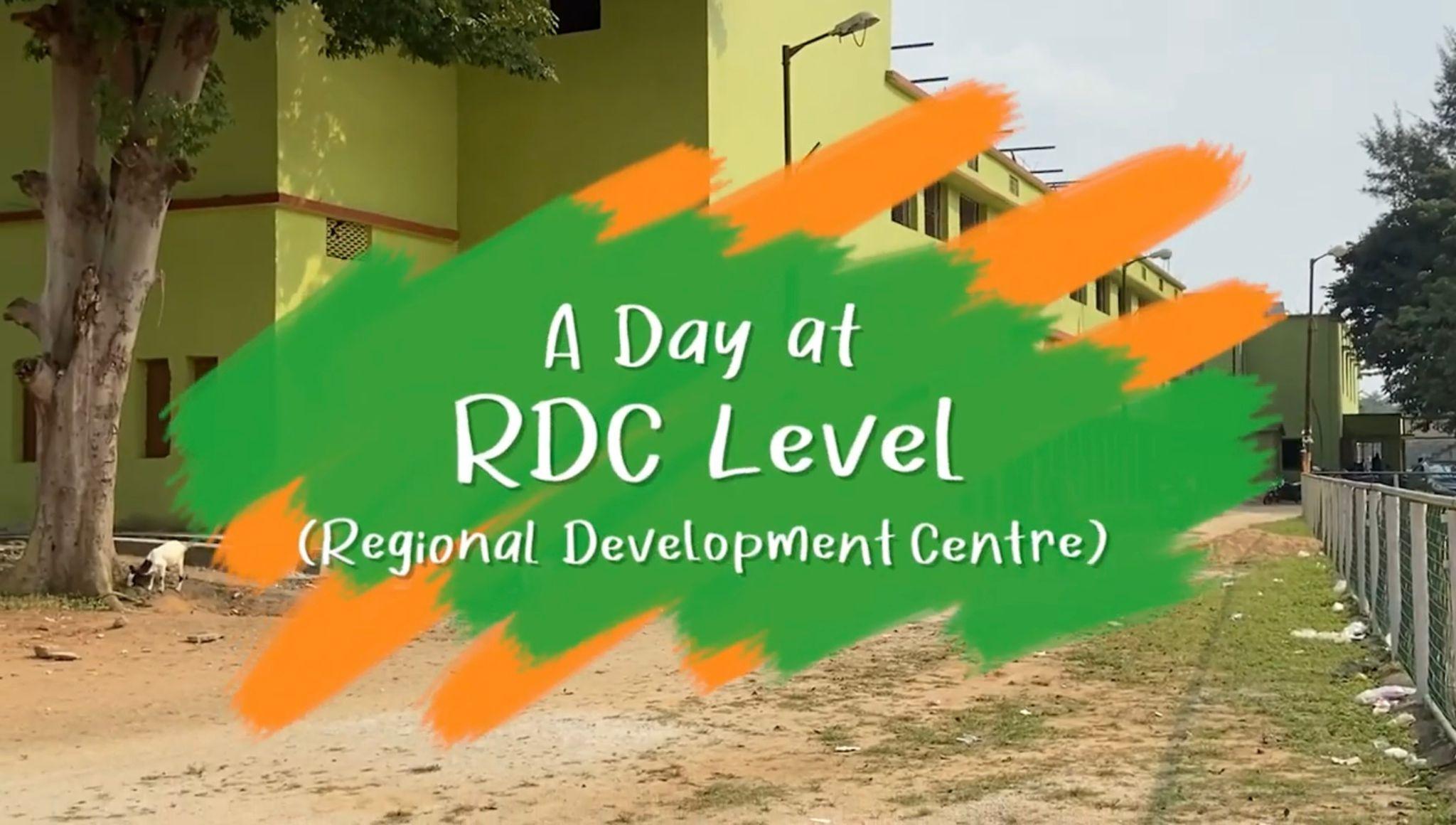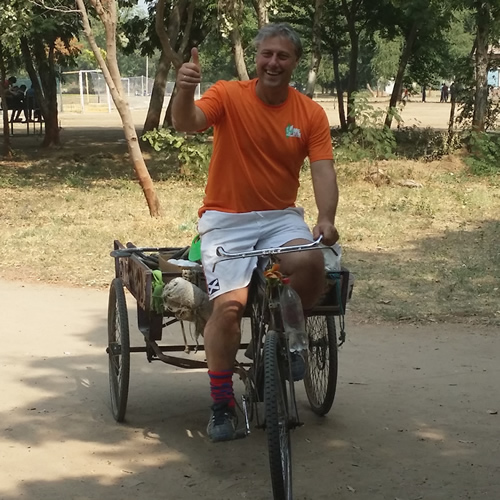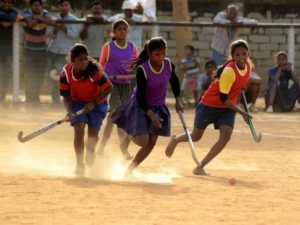
Girls run barefoot, holding up their hockey sticks like swords. It’s an intense match under the blazing sun in a remote Jharkhand village
They don’t have any uniforms, and many don’t have shoes or shin pads. After a lunch of dry, flattened rice, jaggery and soaked gram, they have come rushing to the dusty grounds to play in the finals of a hockey match. We are sitting under a colourful shamiana, a barely adequate shield against a blazing April sun.
Gathered around us are 200 children who have come from remote villages in Jharkhand’s Khunti district. Dressed in dust-stained clothes, these bright-eyed kids aged between 12 and 16 shoot questions at former Indian women’s hockey team captain Sumrai Tete, who is visiting Khunti for the finals of this school-level hockey tournament: “How do I become a player like you?†asks one child. “How do we deal with rival players?†“What if an umpire makes a wrong decision, one that goes against our team?â€
Tete is pleased. “When you speak out, half your battle is won,†she says. The children, from poor tribal families scattered across Khunti district, are clearly serious about getting their lessons in hockey. They listen with rapt attention to Tete, who shares the dais with some other renowned hockey players and coaches from India and the Netherlands.
We are in the Birsa Munda College, 35 km from Ranchi. The premises are plastered with handmade posters of local hockey heroes—Jaipal Singh Munda, Manohar Topno, Michael Kindo, Sumrai Tete and Asunta Lakra.
The tournament, an attempt to bring hockey to the grassroots, is part of a programme by Collectives for Integrated Livelihood Initiatives (CInI), an associate organisation of Tata Trusts that collaborates with One Million Hockey Legs, a project initiated by the Dutch and Indian governments. Dutch hockey great Floris Jan Bovelander is closely associated with the initiative. The programme hopes to reach 50,000 children and create 200 quality players within the next three years.
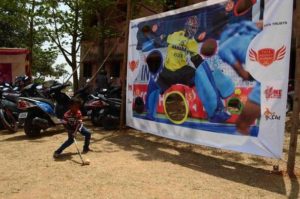
Kick it like Kiki
“My father (a farmer) bought me this hockey stick,†says Juhi Kumari, a Class VIII student of Government Middle English School of Malu village. Her aspiration is to “be like Kiki madam,†one of the coaches working with Bovelander. Every child here has a dream. Nothing dampens their spirit: neither the intense heat nor the lack of facilities.
Manpreet Gudia of Ganolaya village wants “to play well and get a good job.†Soma Dhotra, who is wearing a pair of worn-out white shorts and a sleeveless T-shirt, grins widely when I ask him about his life and the role that hockey plays in it now.
His answers are monosyllabic, but according to his master trainer, Nauri Munda, the well-built Soma, a Class VIII student and son of a small-time farmer from a remote village in Murhu block, is really good with the hockey stick, in his favourite position, which is right out. “My father is a farmer but he encourages us to play hockey. My younger brother also plays. We enjoy playing. We hope hockey will help us get a job somewhere,†says Soma.
Munda has had an interesting journey himself. He was pursuing athletics before switching to hockey and playing for Bihar in the 1994 national hockey championship. His hockey career made no headway, and he decided to teach students from primary classes at a school near his village Mahil.
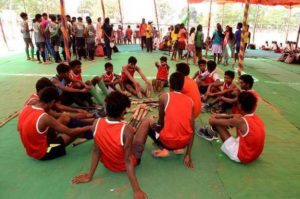
“Earlier, there was no sports in our school. Now students are learning hockey. Initially they did not know how to hold a stick. So I taught them how to hold it, how to hit a ball and dribble. Now they can play matches,†says Munda with visible pride.
As for Bovelander, the hockey initiative in this region, enmeshed in deep socio-cultural and economic challenges, has been an eye-opener. “I see a big gap between life in Holland and life here in this part of India. But I see a lot of connection too. Children everywhere like similar things. I see a lot of similarity in the joy they derive from the team work,†he says. Bovelander observes that the children are bubbling with questions. “Especially about how to cope with emotions and other stuff like that. The benefit of hockey is you learn these skills as well. Only one or two can get to the top. But they develop as people everyday and become stronger.â€
So what led to this initiative in an underdeveloped area, which used to be a Naxal hotbed and is still affected by gang wars between splinter groups, police encounters, human (including child) trafficking and mining?
Livelihood, life skills and hockey, say spokespersons of CInI and Tata Trusts, will give the tribal community new direction. For instance, agriculture, pig farming and handicraft work, with the help of the internet, have improved the quality of life of many villagers.
The Tata Hockey Academy, which will start functioning in Jamshedpur by the year end, will help fulfil the aspirations of these children too. Olympian Sandeep Singh has been roped in.
An old hockey ground has been taken over and a used AstroTurflaid there to create a regional development centre in Khunti. “We have sent a proposal to the State Government to develop this facility. We want the children to get used to playing on AstroTurf as opposed to dusty grounds,†says Singh. “They are hard working, they play in this heat. The end clearly does not matter.â€
Raising dust and hopes
Several former competitive hockey players have been brought in to act as master trainers for a monthly stipend. Jasmani Devi, in her mid-30s, for instance did not make it to the national camp by a whisker. A dejected Jasmani burnt her certificates and citations. Now, tasked with the job of teaching hockey to the kids, she says she is extremely pleased. “I could not achieve my dream, but through this programme I want to help the children achieve theirs.â€
At the Birsa Munda College, the finals have begun. Defying the searing heat and wielding their hockey sticks, the children chase the ball on a bald pitch raising columns of dust as they try to raid the opponent team’s goal post. The lack of order in the game is more than made up for by the single-mindedness of the young teams fighting against great adversity.
They are dressed in ill-fitting clothes—boys in shirts and shorts and girls in tops and skirts of various colours. Bovelander, who has keenly captured all the action-packed moments in his camera, notices that “the boys have shoes, the girls don’t. The boys have shin pads, the girls don’t.â€
Indeed, the boys are curiously better equipped with shoes and shin guards while the girls are running barefoot, many of them physically frail, holding up their hockey sticks like swords. Clearly, while the initiative has taken off, it needs to pay attention to details such as providing basic safety equipment and medical facilities for the hockey-playing children.
As the children battle it out, their energy is electric. Finally, Girls Government Middle School (Pelol) defeats Upgraded High School (Ganaloya) 4-3 for the girls’ crown, and St. John School (Murhu) beats Lutheran Middle School (Bichna) 2-0 to win the boys’ title. The cheering in the small makeshift stadium is deafening.

